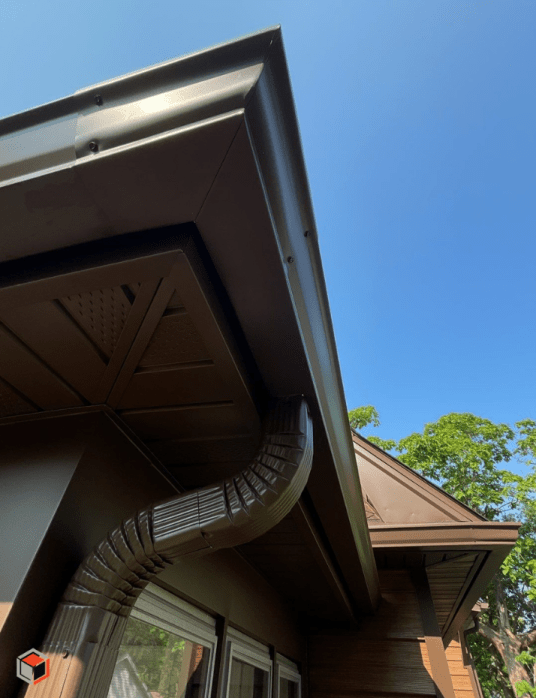When it comes to spring cleaning your house and yard, it is important to remember to add ‘clean gutters’ to your list.
Since a properly functioning gutter system protects your home and its foundation from water damage, his chore is necessary for preparing for the coming seasons. Performing routine maintenance also helps prolong the life of your gutter system and avoid costly repairs. You should thoroughly clean the system twice a year – once in the spring and once in the fall, before winter and snow.
Sticking to these seasonal cleanings is crucial because when water cannot flow through the gutters properly, it becomes clogged and can add excessive weight to the system. This can cause significant damage to the gutters and the roof, which can create cracks, separation of joints, weeds growing in the gutter, and various other problems.
Six common gutter issues you may encounter when performing your spring gutter cleaning routine include:

- Clogged Gutters
- The most effective and efficient way to keep debris from building up and clogging your gutter system is to have gutter guards installed.
Most debris that builds up and clogs gutters include small leaves and twigs that can be easily scooped out by hand or removed with a handheld leaf blower. Then, flushing the gutters with a garden hose removes dirt and small particles. Eliminating debris and buildup also helps you better identify any holes or leaks in your gutter system.
- The most effective and efficient way to keep debris from building up and clogging your gutter system is to have gutter guards installed.
- Clogged Downspouts
- In addition to clogged gutters, you may find clogged downspouts. Clogged downspouts are typically due to debris blocking the drain or ice from the winter not having wholly melted. You can use your garden hose to flush out debris from the top down to clear the downspouts.
- Sagging Gutters
- When standing water or too much debris is in your gutter system, the gutters may begin to sag. Sagging gutters can also be a result of loose or broken hangers. In some cases, the hangers can be tightened and the gutters cleared to help restore some functionality. In other cases, the hangers may not have been installed correctly, and a more detailed repair may be needed.
- Leaks and Holes
- If you notice a stream of water pouring down from the middle of your gutters, your gutters have likely developed a leak. An easy but not foolproof way to determine whether your gutter system has any leaks is to watch for water pouring down from any areas beneath the gutter. There are DIY kits available for repairs, but professional results are generally more reliable, effective, and longer-lasting.
- Damage
- Snow and ice from the winter months can also add weight to the fascia and cause the gutter system to separate and become cracked. Again, there are DIY kits available for repairs, but professional results are generally more reliable, effective, and longer-lasting.
- Bent Gutters
- Heavy wind, rain, or overhanging trees can cause damage to your overall gutter system. If a gutter section is severely crushed or bent, one or more areas of the system will need to be replaced and reattached. To prevent this from happening, cut back overhanging tree limbs to about three feet beyond the roofline – or have a tree trimmer take care of this for you.
In addition to the common issues mentioned above, other problems to look for when cleaning your system include holes, corrosion, sagging sections, and loose, bent, or missing fasteners.
If you notice bends, cracks, holes, or any other damage, call a gutter professional to come out for an inspection to replace the damaged areas.








